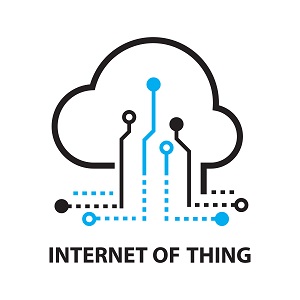The ever shifting, restless nature of the data ecosystem is most acutely demonstrated in contemporary developments in the Internet of Things. The IoT is no longer a macrocosm of the Industrial Internet with distant fancies of smart homes and autonomous vehicles.
Today, it’s powering the remote workforce, underpinning distributed collaborations, and continuously expanding the scope, focus, and definition of what this term means to the enterprise—and to critical concepts like edge computing.
For all practical purposes “your desktop is an IoT device,” posited Automation Anywhere CTO Prince Kohli. “Your corporate internet is an IoT internet from a cloud perspective. The cloud could be Amazon cloud, Azure, Google. Wherever it is, it’s in that datacenter somewhere, whereas you are outside. It could be hundreds of miles away, 50 miles, or a thousand miles. But you are at the edge, from their perspective.”
Edge computing drivers include:
- Latency: Certain low latent events—whether the sudden onset of a bicyclist in the path of a driverless vehicle, or a wearables notification of an impending heart disease malady—require action before transmitting data to central clouds.
- Bandwidth: The impracticality of streaming, for example, all video surveillance data of an airport to a central cloud is apparent in terms of network strain and costs.
- Remote Work: The necessity of remote work spurred by the current public health crisis is one of the foremost drivers for computations at the edge of the IoT, particularly as those concepts are defined by Kohli.
Each of these factors, especially the remote work paradigm, has contributed to the emergent reality that “you’ve got the IoT and you’ve got the Internet of People,” Nexsan CTO Surya Varanasi revealed. Both of these applications are creating a greater reliance on edge deployments, particularly in light of these broadening definitions.
These burgeoning conceptions have significant ramifications for real-time distributed automation, remote work, wearable devices, containers, and endpoint device security, without which IoT and edge deployments quickly lose value—particularly as they’re defined today.
Sensor-Driven Action
Edge computing’s cardinal value proposition is the unparalleled ability to implement swift action—much of which is automatable—in distributed settings. Such action may involve performing analytics, issuing alerts, or checking out customers in contactless retail shopping locations, for example. Fulfilling this objective in sensor-laden, smart settings means “assuming you can communicate across apps, you can take action across apps, and you can consume data, provide, transfer, or manipulate data from one app to another,” Kohli indicated.
Traditional APIs limit this utility to programmers, which doesn’t help the numerous remote workers at the edge of today’s more liberal IoT definition. A better approach is to employ what Kohli termed “semantic APIs” with which users can simply describe their inter-application needs with approaches like Robotic Process Automation, which actually understand them. This way they can “use semantics that say drive this, start this, stop this,” Kohli mentioned. “I should be able to describe what I need.” This approach democratizes the use of inter-app communication at the edge, simplifies it, and reduces time to value for edge-based action.
Securing Endpoints
Inter-application communication within and between edge devices heightens the need to secure these gadgets that are outside organizations’ firewalls and oftentimes characterized by limited compute and security capabilities. “For any device to be smart, multiple applications have to be interactive and communicating with each other,” DH2i CTO OJ Ngo noted. “There’s definitely a need to protect even intercommunication between these apps on the device.” Organizations can harden endpoint device security via software defined transmissions that conceal data in application level micro-tunnels.
Another means of protecting endpoints that’s particularly apposite to the Internet of People is to “have a good backup and replicate the data to someplace else as a secondary backup,” observed Retrospect General Manager J.G. Heithcock. Protecting backups is pivotal for counteracting ransomware attacks, which organizations are more susceptible to than ever with distributed workforces. Credible solutions “ensure you’ve got policies on backups,” Varanasi commented. For example, organizations can backup a laptop’s data to public clouds and define policies that “don’t let anyone delete this backup for a year,” Varanasi said. There are also ways to identify corrupted files and analyze file signatures indicative of ransomware.
The Remote Work Albatross
Working remotely has numerous IoT and edge consequences organizations must master to remain operational, including:
- Digitization: The Internet of People is predicated on digital information and what Kohli termed “the digitization of stuff or devices.” Without digitalization, remote data transfers between workers and centralized loci like clouds or offices aren’t possible when “you can’t get to the office but you want to operate something and you want to be able to look at what is going on,” Kohli remarked.
- Local Processing: The capacity to work locally before transmitting data to hubs is foundational to the edge and today’s distributed workforce, in which “for people, your laptop is your edge.” Varanasi specified. Data scientists, for example, can utilize “local devices where you can collect data, you can download a subset of your original data, build your [machine learning] model; if that works out well you can download a little more to see how it works on the new data, then push it back to the central location to work on the entire dataset,” Varanasi added.
- Data Integrity: Organizations must preserve data integrity for the myriad devices, decentralized locations, and collaboration tools (like videoconferencing solutions) remote workers employ. Small form factor, dynamic app-level perimeters ensure this requirement for “any type of data to be transmitted, whether it’s video or a text file,” Ngo maintained. “It makes no difference; it’s just zeroes and ones that are encapsulated, encrypted, and shipped over the wire.”
- Transmission Intelligence: Data emission-intensive tasks like backups and archiving data quickly become costly when multiplied by the number of people (and their devices) working remotely. Edge precepts in which the delta or changes in data state are transmitted to central locations are pivotal for the human-centric edge. Heithcock mentioned hash techniques and metadata analysis can determine differences in files “so you don’t send over data you don’t need to.”
Containerization
Containers and orchestration platforms like Kubernetes are almost exclusively used for edge deployments at scale like video streaming, which supports anything from equipment asset monitoring to surveillance. This option is renowned for its ease of use. If “there’s something running at the edge and it’s all container-based, you can upgrade that environment very simply,” Varanasi divulged. “You can take that container sitting at the edge and move that data to the cloud simply.”
Containers also obsolete traditional deployment concerns about hardware and software. Without them, for legacy apps “you have to rewrite the application for a targeted architecture,” Ngo disclosed. “With the edge, you stick it inside container technology and you decouple the hardware, operating system, and the app itself from the rest.” The result is efficient architectural freedom of deployment, bolstering the edge.
Wearables
The confluence of edge computing’s prominence and the Internet of People is reflected in the growing wearable device phenomenon. This healthcare use case synthesizes the edge’s most eminent trends related to remote users, inter-app communication, and data protection. “Health diagnosis over the phone is increasing; people don’t want to go to hospitals or clinics for fear of catching Covid-19 ,” Kohli said. “As people get older, doctors and insurance companies are going to start insisting patients start wearing wearable devices.”
Industry standards like HIPAA mandate data privacy—necessitating secure transmissions of this data. Moreover, changes in patient data (indicating increasing blood pressure, for example) must be monitored with cognitive computing technologies to alert practitioners. “Because data has been collected from the sensors, correlated, analyzed, and some action needs to be taken, this requires automation that can go across apps and can operate different apps,” Kohli explained. Manual processing simply isn’t timely enough for vital health concerns.
Gateways
Edge deployments oftentimes utilize gateways positioned between central clouds and endpoint devices. Gateways implement additional processing not performed on endpoints and are used “when you want a particular device to be a leader of a group,” Ngo said. This functionality provides a single point of communication between any number of devices—decreasing latency, costs, and data transmissions to and from the edge. Therefore, gateways serve as efficient intermediaries for managing edge deployments “for intercommunication of a group of devices to interchange and centralize control,” Ngo reasoned.
The Internet of People
The Internet of People signifies a notable transition in what the IoT and edge computing mean today. These notions no longer exclusively apply to continuous sensor-data machine transmissions, but include those of an increasingly distributed workforce’s remote communication. This development explains why “in the last few years, you are starting to see that computing is increasing at the edge,” Kohli reflected. “So it’s not that you’re just doing cloud computing; it’s that you’re putting more computing at the edge.”
About the Author

Jelani Harper is an editorial consultant servicing the information technology market. He specializes in data-driven applications focused on semantic technologies, data governance and analytics.
Sign up for the free insideBIGDATA newsletter.
Join us on Twitter: @InsideBigData1 – https://twitter.com/InsideBigData1





I would like to share some important points with you. The first one is that IoT devices are everywhere now, connected by millions of sensors around us, gathering valuable data every second – everything from how we drive our cars and use our phones to how fast we walk or run on a treadmill; all these factors can help improve healthcare and other industries as well as a physical activity through innovative wearable devices such as smart shoes or even bandages that monitor your health conditions.